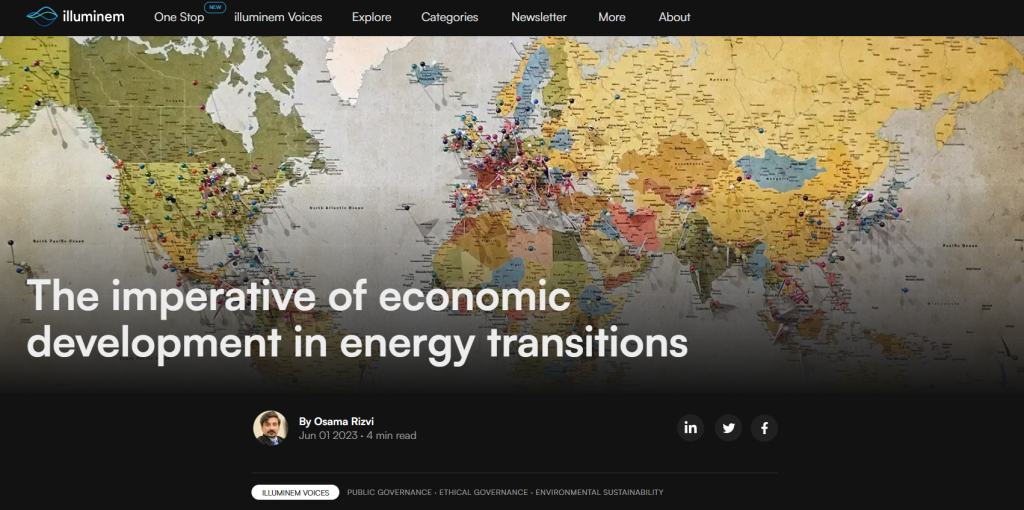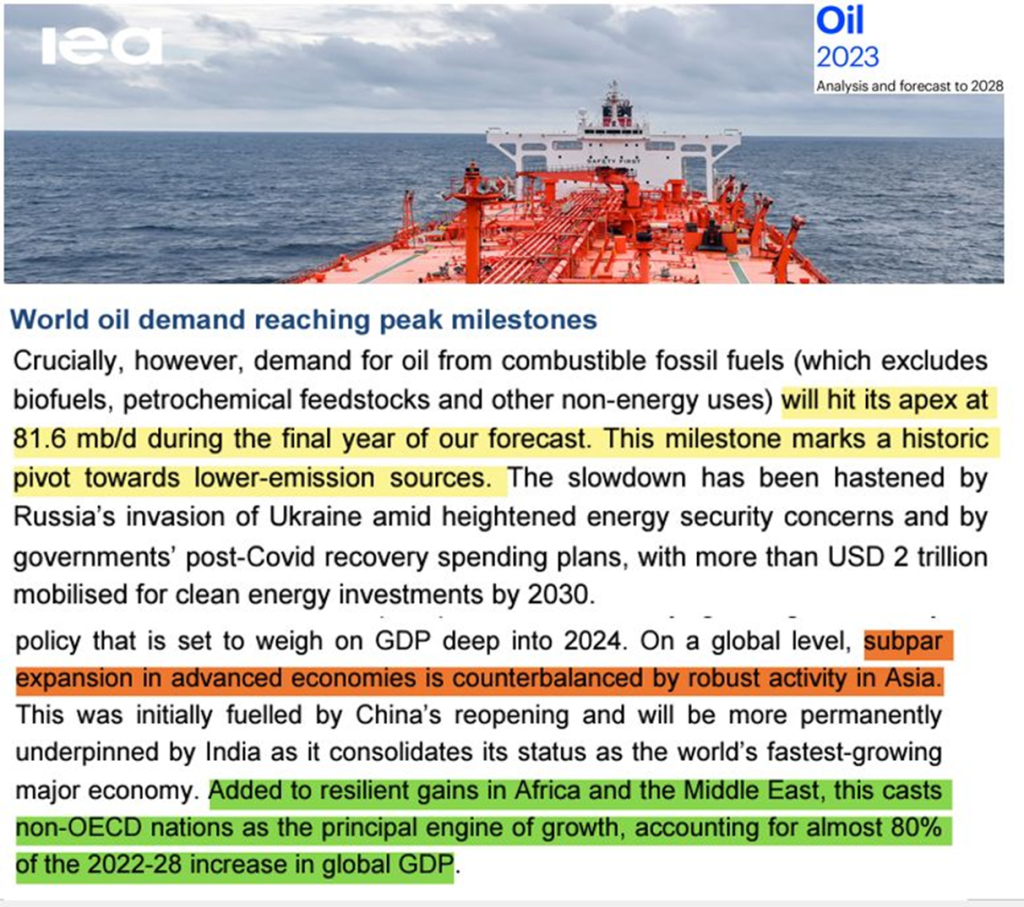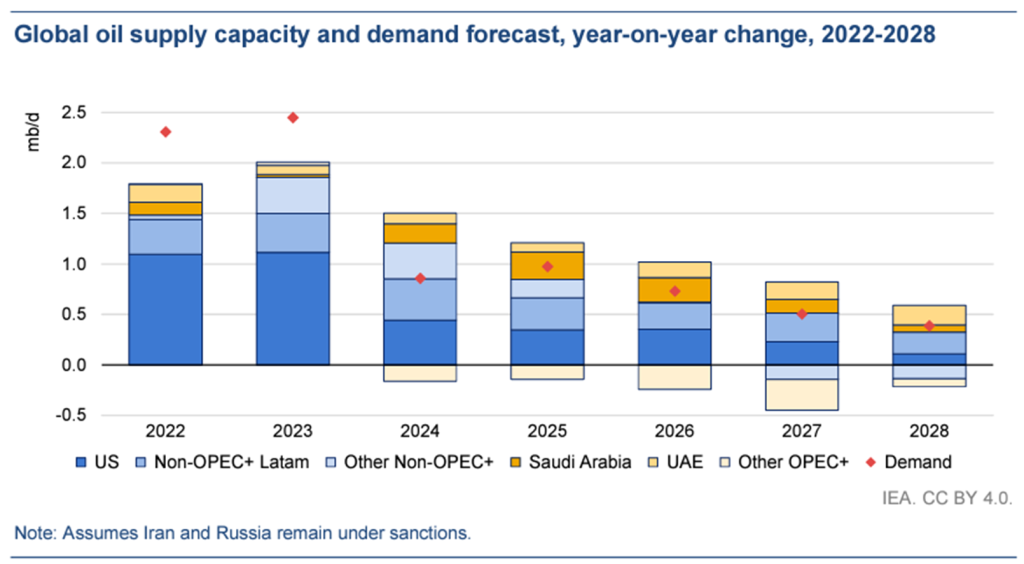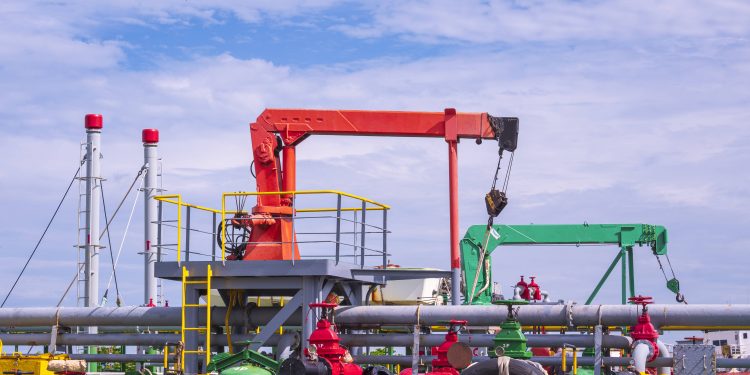Last week IEA released the much anticipated annual report on global oil markets. The 127 page report titled Oil 2023: Analysis and forecast to 2028 offers a rich overview of the latest developments and trends along with some interesting estimates and predictions about the future. I call them interesting as there seems to be some contradictions in it as well. In this short article I will try to highlight my key takeaways from this report and relate the latest developments in a way that puts things into perspectives.

The executive summary starts with the claim that the global oil markets are “recalibrating” as prices are back to pre-war levels. As long as the prices are concerned this seems to be correct. However, the demand and supply situation remains skewed. We will discuss it below.
In terms of global oil demand the agency sees 2028 as the point where it will peak as efforts for energy transition “gathers pace”. At 81.6 mbpd the demand for oil from combustible fuel will start to move towards sources of energy which has lower emissions. More than $2 trillion were mobilized in 2023 for investments in cleaner energy.

However, discussing the fall in oil demand from advanced economies and highlighting that most of the demand is expected to come from Non-OECD countries present a contradiction as the latter group of countries continue to grow its economy, the standards of living will improve and it will eventually and naturally lead to more units of cars, ACs, increased meat consumption, housing, appliances etc – in essence everything that involves the usage of higher demand of conventional energy resources. I have talked about this in detail in the article below for Illuminem.

As it happens the demand for, say, oil will not reduce but increase further. This will have global implications for oil supply and demand especially when, and as the report mentions, these countries will be responsible for 80 percent of growth in GDP between 2022-2028. I have tried to capture this contradiction in this image below:

Following was an interesting chart that showcased the increase in demand for various products:


One of the good things about the report is the admission of weaker economic growth – something that was also highlighted in the World Bank’s June outlook of global economy as well:
In the wake of the Covid-19 pandemic, the global economy witnessed a remarkable recovery, reclaiming its pre-pandemic levels during the early months of 2021. After experiencing a sharp decline of 3.1% in 2020, the real world GDP bounced back impressively by 6.4% in 2021. This resurgence was fueled by the gradual easing of lockdown measures and the simultaneous implementation of substantial fiscal and monetary stimulus packages by governments and central banks worldwide.
However, the initially extraordinary rebound in economic activity began to lose momentum throughout 2022. As aggregate demand surged and supply chain issues emerged, consumer prices soared, creating further challenges. The situation was exacerbated by escalating commodity prices due to Russia’s invasion of Ukraine. These combined factors ultimately compelled global central banks to adopt a more cautious monetary approach starting from early 2022.
The US Federal Reserve, in particular, responded by raising interest rates at an unprecedented pace, implementing a five-percentage-point increase between March 2022 and May 2023. This sudden shift in monetary policy significantly impacted the growth prospects of the Organization for Economic Cooperation and Development (OECD) countries, heightening the risk of recession. Furthermore, the tightening credit conditions, resulting from a gradual reduction in bank lending to households and businesses, are expected to curtail GDP growth in 2023 to approximately 1% for both the United States and the eurozone.
Given the downturn in advanced economies, the global economic outlook has become increasingly reliant on China’s ability to sustain its early post-Covid reopening momentum – and we all know it has been disappointing lately. Should China successfully maintain its economic trajectory, it is anticipated to uplift global trade and manufacturing, providing a much-needed boost however, forecast remains bearish, with GDP growth expected to remain below its long-term trend at 2.4% in 2023 and 2.8% in 2024.
Other points:
Efficiency gains to reduce oil usage by 790,000 bpd with the total savings in oil demand due to rise in the use of EVs to be estimated at 7.8mbpd. By 2028, IEA sees one in four cars to be an EV with a total sale of 25.9 million.


Use of oil in power generation is also expected to fall. But we should all remember that does not mean that it will amount to lower emissions. Electricity is only 18 -20 percent of total energy use.

Once again you see that there isn’t much difference between 2022 and 2028 for Asia, America and South America for the above figures. In fact the use of oil for electricity will increase in Africa.
In terms of oil supply we have the following chart:

I, on the other hand, expect oil supply to, if not increase, then at least retain the current levels. It is evident by the new fields coming and also ties neatly with the economic imperative described above. About 47 countries have planned expansion in Oil and Gas sector.

We can go on but I hope this gives you an overview of what does the report entails: the usual rosy outlooks regarding energy transitions and some contradictions here and there.
Nonetheless, it remains a great resource to learn from and further research on the points highlighted above.
Happy Sunday – Happy Reading!













